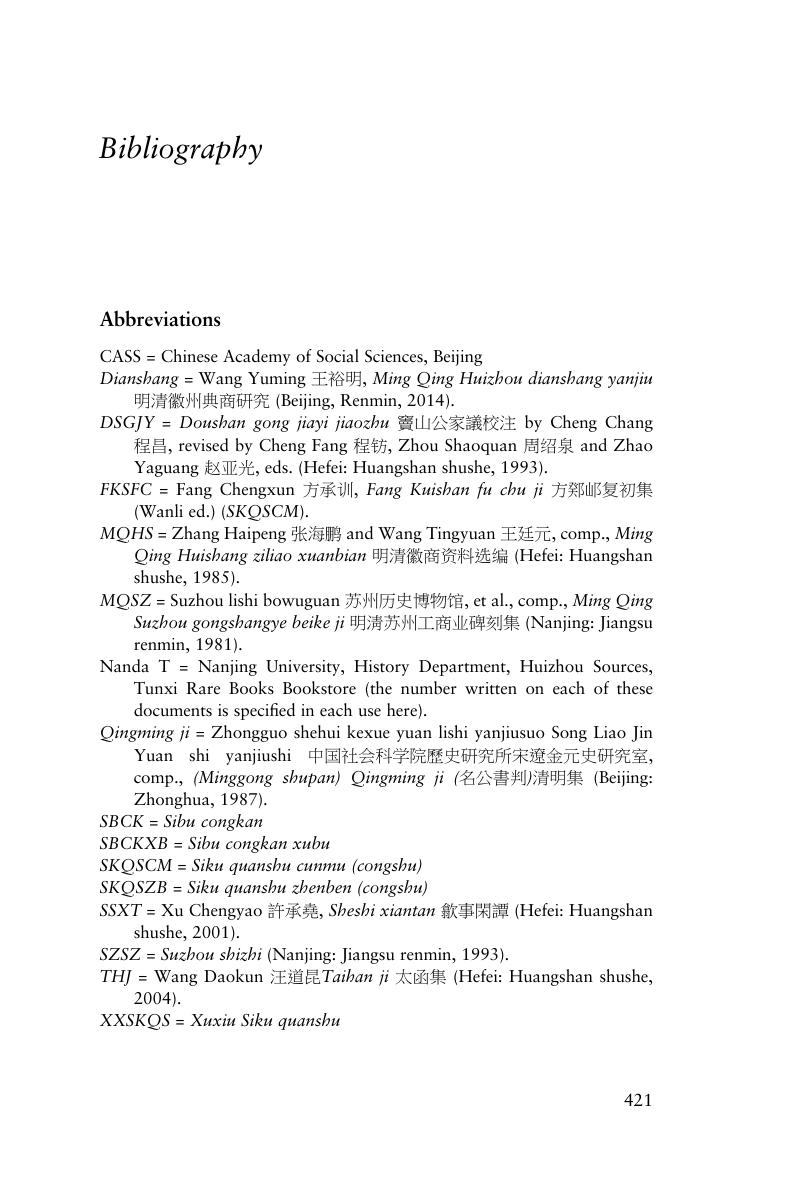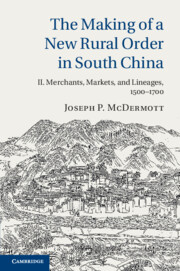Book contents
- The Making of a New Rural Order in South China
- The Making of a New Rural Order in South China
- Copyright page
- Dedication
- Contents
- Tables
- Maps
- Acknowledgments
- Introduction
- 1 Ming Markets and Huizhou Merchants
- 2 Ancestral Halls and Credit
- 3 The Working World of Huizhou Merchants
- 4 Huizhou Merchants and Their Financial Institutions
- 5 Huizhou Merchants and Commercial Partnerships
- 6 Huizhou House Firms
- 7 Conclusion
- Bibliography
- Index
- References
Bibliography
Published online by Cambridge University Press: 22 June 2020
- The Making of a New Rural Order in South China
- The Making of a New Rural Order in South China
- Copyright page
- Dedication
- Contents
- Tables
- Maps
- Acknowledgments
- Introduction
- 1 Ming Markets and Huizhou Merchants
- 2 Ancestral Halls and Credit
- 3 The Working World of Huizhou Merchants
- 4 Huizhou Merchants and Their Financial Institutions
- 5 Huizhou Merchants and Commercial Partnerships
- 6 Huizhou House Firms
- 7 Conclusion
- Bibliography
- Index
- References
Summary

- Type
- Chapter
- Information
- The Making of a New Rural Order in South China , pp. 421 - 461Publisher: Cambridge University PressPrint publication year: 2020



